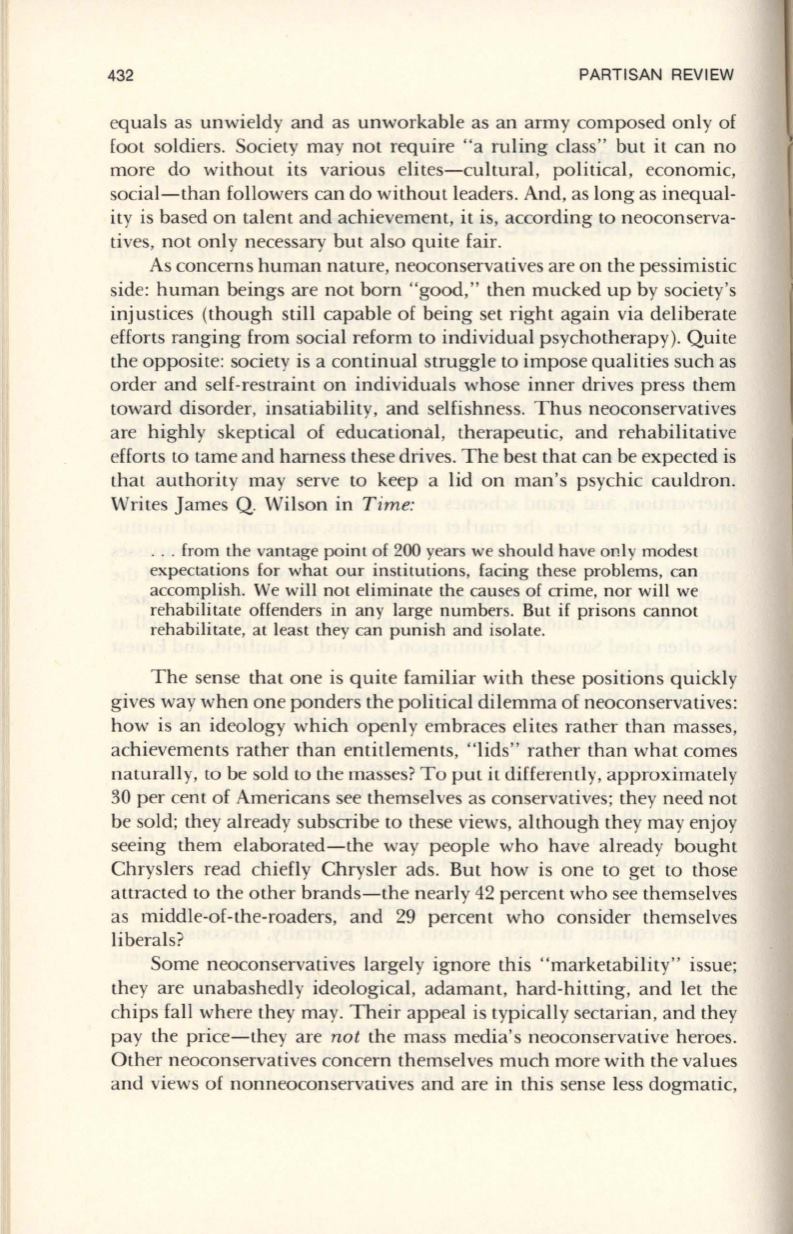
432
PARTISAN REVIEW
equals as unwieldy and as unworkable as an army composed only of
foot soldiers. Society may not require "a ruling class" but it can no
more do without its various elites-cultural, political, economic,
social-than followers can do without leaders. And, as long as inequal–
ity is based on talent and achievement, it is, according to neoconserva–
tives, not only necessary but also quite fair.
As concerns human nature, neoconservatives are on the pessimistic
side: human beings are not born "good," then mucked up by society's
injustices (though still capable of being set right again via deliberate
efforts ranging from social reform to individual psychotherapy). Quite
the opposite: society is a continual struggle to impose qualities such as
order and self-restraint on individuals whose inner drives press them
toward disorder, insatiability, and selfishness. Thus neoconservatives
are highly skeptical of educational, therapeutic, and rehabilitative
efforts to tame and harness these drives. The best that can be expected is
that authority may serve to keep a lid on man's psychic cauldron.
Writes James Q. Wilson in
Time:
... from the vantage point of 200 years we should have only modest
expectations for what our institutions, facing these problems, can
accomplish. We will not eliminate the causes of crime, nor will we
rehabilitate offenders in any large numbers. But if prisons cannot
rehabilitate, at least they can punish and isolate.
The sense that one is quite familiar with these positions quickly
gives way when one ponders the political dilemma of neoconservatives:
how is an ideology which openly embraces elites rather than masses,
achievements rather than entitlements, "lids" rather than what comes
naturally, to be sold
LO
the masses? To put it differently, approximately
30 per cent of Americans see themselves as conservatives; they need not
be sold; they already subscribe to these views, although they may enjoy
seeing them elaborated-the way people who have already bought
Chryslers read chiefly Chrysler ads. But how is one to get
to
those
attracted to the other brands-the nearly 42 percent who see themselves
as middle-of-the-roaders, and 29 percent who consider themselves
liberals?
Some neoconservatives largely ignore this "marketability" issue;
they are unabashedly ideological, adamant, hard-hitting, and let the
chips fall where they may. Their appeal is typically sectarian, and they
pay the price-they are
not
the mass media's neoconservative heroes.
Other neoconservatives concern themselves much more with the values
and views of nonneoconservatives and are in this sense less dogmatic,


